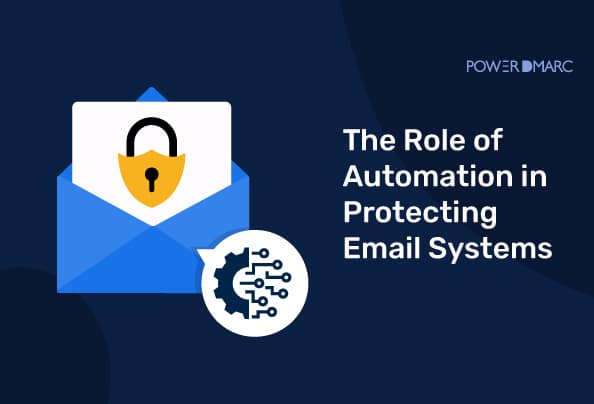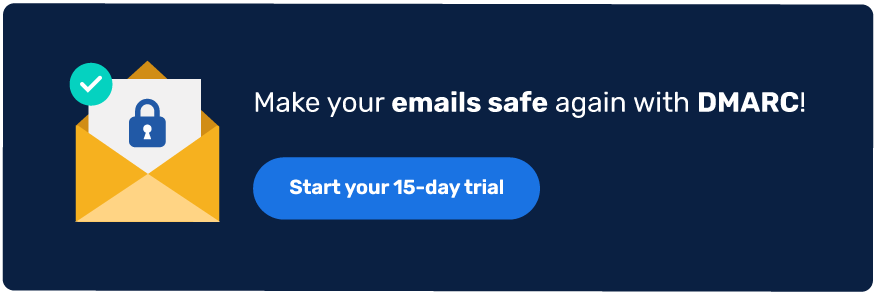
2024-8-28 22:52:56 Author: securityboulevard.com(查看原文) 阅读量:5 收藏
Reading Time: 4 min

Let’s face it: emails nowadays are both a blessing and a curse. On one hand, emails are a simple, trustworthy communication tool that keeps everyone connected on a global scale. On the other hand, emails have now become an easy target for every cybercriminal with an internet connection. Since we cannot physically guard our emails all the time, it is important for us to follow a layered approach like automation to keep our emails protected.
A Brief History of Email Security
Earlier, email security was only limited to keeping passwords, which we hoped would keep our systems secure all the time. Security measures at that time were more reactive than proactive, and every time we were hit by a virus, spam, or phishing attempt, we would scramble our way to fix the mess.
However, cybercriminals have evolved since then, and so have their ways of messing with our email communications. Phishing attempts, malware, and spam have become more sophisticated and dangerous, demanding a huge boost in our email security efforts.
The Rise of Email Security Automation

Enter automation, the hero of modern email security. Initially, automation started with small, simple filters to flag any obvious spam, basic antivirus checks, and keeping an eye on any suspicious attachments. But as the cyber threats evolved, so did automation. It wasn’t easy to keep the scammers away from phishing attempts using basic filters and tools, thus email security automation practices became smarter, faster, and more comprehensive.
So, what does automation look like in today’s time? Well, automation does not just boost spam filters; it certainly is more than that. Automation in email protection is a multi-layered approach combining various technologies to create a near-impenetrable system.
The Role of AI and Threat Intelligence in Email Security Automation
The introduction of automation in the email security space has been powered by the evolution of AI and Threat Intelligence technologies. The integration of AI has led to the emergence of modern and automated solutions for detecting, predicting, and responding to cyber threats and incidents. AI’s ability to continuously refine its algorithm has also reduced inaccuracies and increased operational efficiency.
Let’s break down the different key components of automation in email security –

Spam Filters
Spam filters have seen quite an evolution from how they used to work earlier. In today’s digital age, spam filters use machine learning models to adapt and learn from new threats. Today, spam filters not only block emails based on specific keywords, but they analyze the patterns, sender’s reputation, and even any particular time of the day to determine if the email should be allowed through your inbox.
Phishing Detection
Phishing attacks are a very important part of a cybercriminal’s job. However, automation now has gotten better at filtering them out. Nowadays, through many advanced algorithms, automated phishing detection tools can easily detect any suspicious links, analyze the mail contents, and even check the email’s metadata for any inconsistencies.
Malware Scanning
Gone are the days when you had to run separate antivirus programs to check for malware in your files. With modern email security automation, you now get real-time scanning of attachments and links, often including cross-referencing attachments with global threat databases to ensure that no malware slips through.
Behavioral Analysis
Behavioral analysis in automation is where things get really cool. Automation techniques can now analyze typical email behavior – who you communicate with, what time you usually send your emails and even the language you use. If you have a set pattern and anything out of the blue pops up, the system will automatically flag it for further inspection.
Predictive Threat Detection
Automation in email security has also paved the way for predictive threat detection and analysis. This is the process of predicting and detecting existing and emerging cyber threats over extended periods of time using AI-powered threat intelligence technology. The process can help detect real-time spoofing attempts as well as predict attack patterns and trends to prevent future occurrences.
The Downside of Automation
Just like everything else in the digital realm, automated email security has a few downsides as well. AI-driven solutions can be expensive and hard to integrate with existing systems. Maintenance is also often a hassle and may get quite complicated without adequate technical knowledge.
Why PowerDMARC is Different
PowerDMARC defies the norm when it comes to email security automation by automating email authentication for businesses without breaking the bank!
With PowerDMARC you can:
- Deploy DMARC easily and instantly along with other email authentication protocols
- Seamlessly integrate with your existing systems using detailed API endpoints for every feature
- Pay-as-you-system with pricing starting at only $8 per month
- A rich feature stack that also includes predictive threat analysis, real-time attack alerts, reputation monitoring, email header analysis, and much more!
Book a demo to learn more!
Wrapping Up
In the end, we can conclude that automation in email protection is a necessity. However, like any other tool, one should always be careful about automation. If there is over-reliance or under-realization of automation, it can lead to both complications and vulnerabilities in your system.

*** This is a Security Bloggers Network syndicated blog from PowerDMARC authored by Ahona Rudra. Read the original post at: https://powerdmarc.com/email-security-automation/
如有侵权请联系:admin#unsafe.sh
